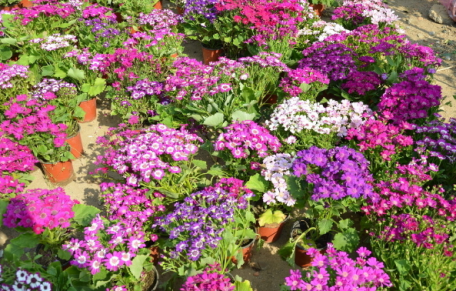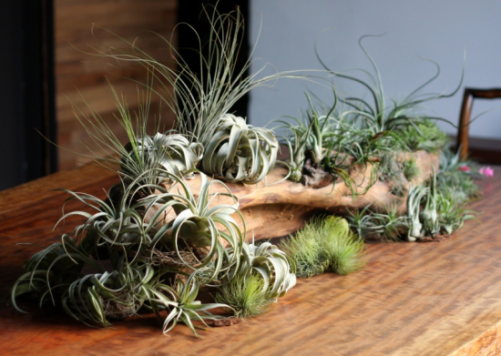Culture of round-leaf taro
Temperature
Round-leaf taro likes a warm and stable environment, so its resistance to heat is very low, but round-leaf taro is not only afraid of high temperature, its cold resistance is also very poor. Therefore, the most suitable temperature for the growth of round-leaf taro is between 18 and 30 ℃. In late spring and early summer, once the environmental temperature exceeds 25 ℃, it must be shaded in a shed, and then a most suitable environment must be created by spraying water on the leaf surface and in the greenhouse.
In winter, if the room temperature is less than 5 ℃, the leaves of round-leaf taro will be seriously affected by freezing injury. Therefore, at the end of autumn, round-leaf taro should be moved to a sunny place for maintenance.
Light
Round-leaf taro likes to be half-overcast. Remember not to expose yourself to the sun so as to avoid serious burns. Otherwise, the leaves will be dim and lose their luster, affecting the sense of beauty. Therefore, it should be placed in the greenhouse to replenish light in winter. In daily life, it can be placed indoors as a potted plant, and should be placed in front of a window with sufficient scattered light.

Moisture content
Round-leaf taro likes to be moist, so watering once a day in its growing season can be properly sprayed to maintain wettability. To the winter to strictly control the amount of water, too wet will make its drainage impassable, roots rot, leaves withered.
When the spring flowers bloom, new leaves will grow again. At this time, do not water too much, need to accompany the growth of new leaves, gradually increase the amount of water.
Soil
Round-leaf taro is the most suitable for good drainage, fertile and slightly acidic humus soil.
Fertilizer application
During the growing period, thin organic fertilizer should be applied once a week. In summer, if the temperature is higher than 32 ℃, you should stop applying fertilizer immediately. At the end of autumn and the beginning of winter, all topdressing should be stopped, otherwise the plant will rot.
How's it going? Do you have a unique feeling of finding treasure when you cultivate a lovely floret under numerous branches and leaves? The above is today's introduction, I hope reading this article will help you, thank you for reading!
How to cultivate round-leaf taro the culture method of round-leaf taro
Round-leaf taro is a beautiful foliage plant, especially popular, suitable for indoor viewing, but also can green the environment, but how should this kind of round-leaf taro be cultivated? What is its breeding method? After a while, the editor will write out the culture method of round-leaf taro, and friends who like this plant can focus on understanding it.
Culture method of round-leaf taro
1. The temperature of culturing round-leaf taro
The temperature of round-leaf taro is very important if you want to raise it well. this kind of plant is not heat-resistant, afraid of high temperature, and cold resistance is also relatively poor. It likes to grow in an environment of 18 to 30 degrees. When the temperature exceeds 30 degrees, it should be shaded and sprayed to the leaves. In winter, it can not be placed in an environment below 10 degrees. When the local temperature is lower than five degrees, round-leaf taros will be frostbitten.
2. Illumination of cultured round-leaf taro.
Round-leaf taro is a kind of green plant that likes semi-shady environment, which is afraid of high temperature and exposure, so it can not be put in strong light, otherwise it will burn its leaves, lose its luster and reduce its ornamental value obviously. It is most appropriate to cultivate round-leaf taro in an environment with sufficient scattered light.
3. Fertilizer and water management of cultured round-leaf taro.
Round-leaf taro likes a humid environment. When it is in the peak growing season, it should be watered once a day and sprayed to the leaves, but it can not make stagnant water appear in flowerpots. Water should be controlled in time after entering winter, otherwise its roots will rot and die. In addition, round-leaf taro is a kind of fertilizer-loving plant, which can be fertilized once a week during the growing season, and fertilizer can choose thin cake fertilizer. However, after entering the winter, the frequency of fertilization will be reduced, once a month.
How to raise round-leaf taro culture methods and matters needing attention
Round-leaf taro must be familiar to many people, and it is a very common plant. Round-leaf taro has high ornamental value, so many people choose to breed it. Presumably, what we are most concerned about before breeding is its breeding method! Next, let's study together.
How to raise round-leaf taro
1. To strengthen the control of room temperature, the most suitable temperature is 18 ℃ at night and 20-22 ℃ in daytime.
2. It should be properly ventilated at noon to maintain the best planting humidity.
3. Observe and maintain, pay attention to the occurrence of diseases, and don't water too much.
4. Cut off the diseased leaves in time and isolate the diseased and disabled plants.
5. Strengthen the management of fertilizer and water, gently and slowly during watering, not too fast, to prevent spraying on the leaf surface.
Culture method of round-leaf taro
1. Temperature. Round-leaf taro likes a warm and peaceful environment, so it is not resistant to heat, is afraid of high temperature, and its cold resistance is poor. The suitable temperature for its growth environment is 18-30 ℃. When the ambient temperature exceeds 25 ℃ in late spring and early summer, it is necessary to build a shed for shade and spray water to create a cool, ventilated, moist and dark environment. Ambient temperature in winter. No less than 10 ℃. If the room temperature is less than 5 ℃, the round-leaf taro will sleep and suffer serious freezing damage. Generally speaking, at the end of autumn, taro should be moved to a sunny place in time for protection and overwintering.
2. Light condition. Round-leaf taro likes semi-shade, avoid high-temperature exposure, avoid serious burns to the leaves. It causes the leaves to be dim and dull and loses its original sense of beauty. Therefore, it should be placed in the greenhouse to replenish light in winter. In daily life, it can be placed indoors as a potted plant, and should be placed in front of a window with sufficient scattered light.
3. Water condition. Round-leaf taro likes the wet environment, so the growing season should be watered once a day, and the spray around the page and environment should be strengthened to keep it moist and not too dry. Strict control of watering in winter, basin soil is too wet will lead to poor drainage, root rot, so that the leaf withered phenomenon. When the spring is full of flowers, the plant will reproduce new leaves. The germination of new leaves should not be watered too much, along with the increase of new leaves, gradually increase the amount of water, which is conducive to the healthy growth of the plant.
4. Soil conditions. Round-leaf taro prefers well-drained, fertile and slightly acidic humus soil. The basin soil should be mixed with humus fertilizer and river sand.
5. Fertilization method. During the growing period, round-leaf taro should apply thin organic fertilizer once a week. Potted plants are suitable for viewing at home and in public places. In the high temperature season in summer, when the temperature is higher than 32 ℃, the fertilization of round-leaf taro should be stopped. At the end of autumn and the beginning of winter, stop all topdressing, otherwise it will cause rotting roots.
Matters needing attention of round-leaf taro
Round-leaf bamboo taro should make the basin soil slightly dry in winter, in order to pass the winter, usually watering should not be too waterlogged, otherwise there may be rotten roots or root diseases; if the plant is too shaded, the silver-gray stripes on the edge of green apple bamboo taro leaves will be darkened, affecting the ornamental effect. When fertilizing, we should pay attention to the ratio of nitrogen, phosphorus and potassium, do not apply nitrogen fertilizer alone, otherwise it will affect the color of leaves.
Pest control of round-leaf taro
1. Round-leaf taro scale. Control methods: for the control of shell insects, they can be sprayed in the nymph stage. At this time, most of the scale insects do not hatch, and the shell has not yet been formed, which can be killed with chemicals. 1000 times of omethoate is sprayed every 7-10 days.
2. Round-leaf taro red spider. Prevention and control methods: keep the air usually, the environment is the same, the humidity is more than 40%, often spraying water on the leaves can prevent the breeding of red spiders, 20% dicofol 1000 times solution can be used to spray.
In fact, the culture method of round-leaf taro is very easy as long as it has mastered the skills. You can start by understanding its growth habits. In the later stage of breeding, it needs strong pest, fertilizer and water management. only by doing these work well can its growth be good and its ornamental ability be high.
- Prev

Breeding method of melon
1, sowing method after the seeds mature harvest, at the same time exposure, put into paper bags, stored in a dry place. It is best to sow in the spring of each year. 2, cuttage or ramet propagation Every year in May is the flowering season of melon, this time can be removed from the lateral buds, cuttage in clean river sand
- Next

Culture of air pineapple
Culture environment temperature: take 15 degrees to 25 degrees as the standard. Winter, above five degrees. In summer, if the temperature is not higher than 25 degrees, it is necessary to strengthen ventilation and watering. Moisture: usually watered once or twice a week. In addition, air pineapple requires high air humidity, and water spraying is also very important.
Related
- Fuxing push coffee new agricultural production and marketing class: lack of small-scale processing plants
- Jujube rice field leisure farm deep ploughing Yilan for five years to create a space for organic food and play
- Nongyu Farm-A trial of organic papaya for brave women with advanced technology
- Four points for attention in the prevention and control of diseases and insect pests of edible fungi
- How to add nutrient solution to Edible Fungi
- Is there any good way to control edible fungus mites?
- Open Inoculation Technology of Edible Fungi
- Is there any clever way to use fertilizer for edible fungus in winter?
- What agents are used to kill the pathogens of edible fungi in the mushroom shed?
- Rapid drying of Edible Fungi

